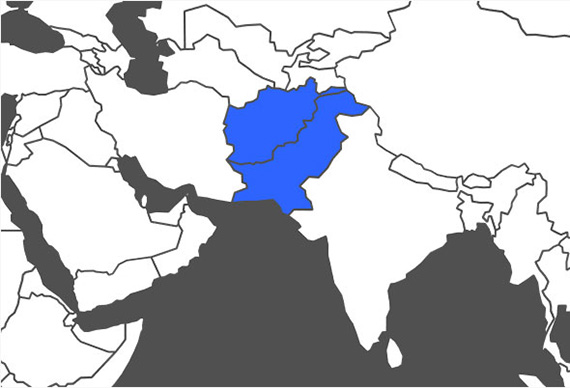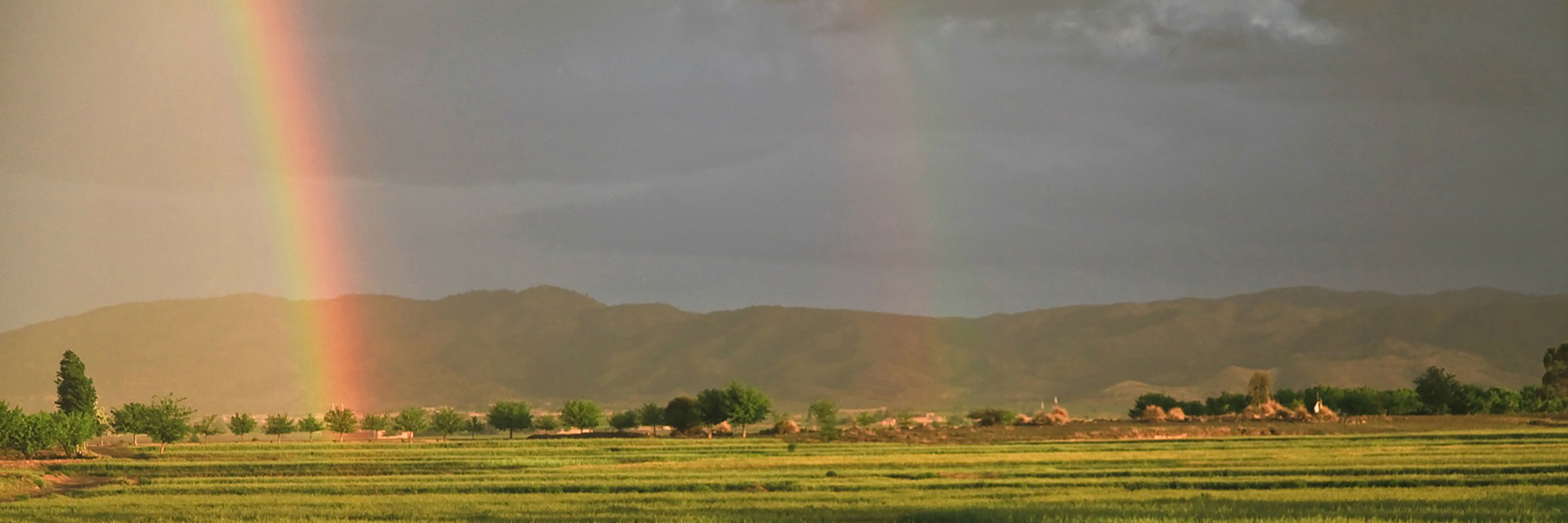The Department of Central Eurasian Studies (CEUS) at Indiana University offers introductory, intermediate, and advanced levels of Pashto. Additionally, interested students may continue learning Pashto through independent reading classes and combine the language with their research and professional interests.
Pashto at CEUS

What is Pashto?
Pashto belongs to the Iranian group of the Indo-European family of languages, and the East Iranian subgroup of languages, along with several languages of the Pamir-Badakhshan region of Northeast Afghanistan and Eastern Tajikistan. These languages are quite separate from the West Iranian (or Persian) subgroup consisting of Farsi, Dari, and Tajiki.
Approximately 40 million people speak Pashto as a native language. The majority of Pashto speakers live in Afghanistan (estimated 12 million) and Pakistan (about 27 million). Pashto is also spoken as a first language in some Baluchi communities living in Pakistan and Afghanistan.
Pashto is one of two official languages of the Islamic Emirate of Afghanistan. The vocabulary of Pashto, especially spoken in Afghanistan, has been considerably influenced by Dari, which serves as a lingua franca in the country.
IU Course Offerings:
Course offerings are made available in accordance with class level and student interest. Several IAUNRC languages - including Pashto - are part of IU’s Summer Language Workshop.
Why study Pashto?
Pashtuns are one of the major ethnic groups of Central Asia, living there since ancient times. Historically, the Suleiman Mountains on the border of Afghanistan and Pakistan was identified as the traditional homeland of the Pashtun tribes. In modern times, Pashtuns live in much broader territory including Central, Western, and Northern Afghanistan and Northwest Pakistan. Also, a sizable number of Pashtuns can be found in India, Iran, and Tajikistan.
However, the majority of Pashtuns live in Afghanistan and Pakistan, in a territory divided into two by the Durand Line, drawn by Great Britain in 1893. During the last 30 years of war in Afghanistan, many Pashtuns found refuge in Saudi Arabia, United Arab Emirates, Australia, United Kingdom, Germany, Sweden, Canada, and the United States.
There are very few people in America who learn or speak Pashto, and never before has there been such an urgent demand for these language experts. Those who study Pashto can find careers in foreign service and intelligence, translation and interpreting, consulting, journalism, and many more.
Knowing Pashto will allow you to communicate with people in Afghanistan and Northwest Pakistan, in addition to Pashtun refuges living in the United States and all over the world. Pashtuns represent the largest ethnic group in Central Asia. They have a growing influence on the political, economic, and strategic situations in the region and throughout the world. Knowing Pashto gives you the ability to access information which will provide opportunities to foresee and analyze critical perspectives of development in the complex situations of the region.
Modern standard Pashto has been influenced by many Iranian and non-Iranian languages spoken in Central and South Asia. Linguists find Pashto a fascinating mix of South and Central Asian linguistic features that reveals millennia of historical influences.
Learning Pashto will be challenging, but also fun! And remember, by learning Pashto you will be introduced to the warm and hospitable Pashtun people and their fascinating customs and Pashtunwali code of the Pashtuns.
Common Phrases
Audio transcript:
السلام علیكم - Assalam alikum
Hello!
Audio transcript:
زه دپښتو ژبې زده كونكی یم٠
I am a student of Pashto.
Audio transcript:
دخدای په امان - D-xuday b-aman
Goodbye!


